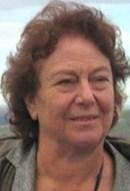Plenary Speakers
"The meeting was generally felt to be a pleasant one, being composed in a good proportion of those who would talk and those who would listen."
Jan Fergus
"'Rivalry, Treachery between sisters!' Tensions between Brothers and Sisters in Austen's Novels"
Published in Persuasions 31 (2009). “'Rivalry, Treachery between sisters!' Tensions between Brothers and Sisters in Austen's Novels”
Persuasions 31 (2009): 69-88.
Friday, October 9
Although this quotation from The Watsons is incredulous, as if Emma Watson cannot possibly imagine treachery between sisters, the eighteenth century in general took deep sibling rivalry for granted in ways that might surprise us. Even a popular devotional book, A New Week's Preparation to the Altar, which outlines the questions you should think of each day of the week to prepare for Sunday's communion, has the reader ask himself on Monday, "Dost thou not secretly wish their [your brothers' and sisters'] death or disgrace, to make thy own fortune the more plentiful?" Against this sort of universal cynicism about siblings, propagated also in conduct books and much eighteenth-century fiction, Austen's novels of course give us many loving brothers and sisters. But the novels also portray much more obviously charged or tense relations, such as those between all the Bertram siblings, the Elliot sisters, the Steeles, the Ferrars, the Crawfords, and so on. We will look briefly at the clear rivalries and even treacheries among these brothers and sisters in order to examine and appreciate more fully the comic tensions—the irritations, the slight jabs, the rubs, even the occasional mini-whines—that Austen reveals within the relations of loving and lovable sibs such as Jane and Elizabeth Bennet, Fanny and William Price, George and John Knightley, and of course Elinor and Marianne Dashwood.
Austen scholar Jan Fergus will deliver the North American Scholar lecture. A graduate of Stanford University and the City University of New York, Dr. Fergus is Professor Emerita from Lehigh University, where she taught popular courses on Jane Austen. Her many publications include Jane Austen: A Literary Life, Jane Austen and the Didactic Novel: Northanger Abbey, Sense and Sensibility, and Pride and Prejudice, and Provincial Readers in Eighteenth-Century England. Dr. Fergus is well-known among JASNA members for her amusing lectures and articles on whining: "'My sore throats, you know, are always worse than anybody's': Mary Musgrove and Jane Austen's Art of Whining" (Persuasions 15), and "Male Whiners in Jane Austen's Novels" (Persuasions 18). In addition to having written numerous articles for scholarly journals and collections, she most recently contributed "The Professional Writer" to The Cambridge Companion, Jane Austen in Context. For The Juvenilia Press, she edited and wrote the introduction to Austen's Lesley Castle and A History of England. The Eastern Pennsylvania Region of JASNA is grateful to Dr. Fergus for her many years as a benefactress while she was a member of the region.
Maggie Lane
"Brothers of the more famous Jane: the literary aspirations, achievements and influence of James and Henry Austen"
Published in Persuasions 31 (2009). “Brothers of the More Famous Jane: The Literary Aspirations, Achievements, and Influence of James and Henry Austen”
Persuasions 31 (2009): 13-32.
Saturday, October 10
The Austens were a literary family, fond of all kinds of reading and adept at writing letters, charades and light verse for their own amusement. But only James and Henry—besides Jane—harbored literary ambitions and produced literary texts. Between them these two brothers authored a quantity of polished essays, a small amount of fiction, a respectable body of poetry, sermons deemed worthy of publication and some biography. Their influence on their younger sister ranged from setting her an example as a child, to manipulating her reputation after death. How did the brothers feel about her success, especially in the light of their own obscurity? Did they recognize themselves in any of her fictional characters? Maggie Lane’s talk will examine the literary relationships between these three siblings.
Maggie Lane has written several highly-acclaimed books on Jane Austen, including Jane Austen's Family through Five Generations (1984); Jane Austen's England (1986); A Charming Place: Bath in the Life and Novels of Jane Austen (1989); Jane Austen and Food (1994); Jane Austen's World: The Life and Times of England's Most Popular Author (1996); Jane Austen and Names (2002); and Jane Austen and Lyme Regis (2003). She has published articles in The Annual Report of the Jane Austen Society and in Persuasions, JASNA's journal, and most recently in Jane Austen's Regency World, a publication of the Jane Austen Visitor's Centre, located in Bath. She has also published books on Frances Burney and other women writers. Maggie is a popular speaker among JASNA members in addition to being a distinguished author. She co-founded the Bath and Bristol branches of the Jane Austen Society and has been involved in two successful Bath projects: organizing the creation of a plaque that commemorates the Austen family at St. Swithin's Church and assisting in the creation of the new Jane Austen's Visitor Center. She presently lives in Exeter, Devon. The Eastern Pennsylvania Region is pleased that such an accomplished lady will add to the wonders of the 2009 AGM.
John Mullan
"Sisterly Chat"
Published in Persuasions 31 (2009). “Sisterly Chat”
Persuasions 31 (2009): 59-68.
Sunday, October 11
Dialogue is one of Jane Austen's greatest arts. Most of the conversations in her fiction are governed by decorum (though many of her speakers are indecorous) and are exercises of politeness (though her most entertaining characters are rude). Even children with their parents and spouses in front of their children are required to speak with formal reserve. But what about sisters? Utterly familiar to each other, often all too knowing about each others' characters, they converse without the usual evasions and illusions. How does Austen use the exchanges between sisters, especially when no one else is listening, to reveal the histories and dispositions of her characters? How do sisters talk to each other? John Mullan will try to answer these questions, and in doing so to illuminate Austen's technical brilliance as a writer of dialogue.
Dr. John Mullan is Professor of English at University College London. He is the author of Sentiment and Sociability: The Language of Feeling in the Eighteenth Century (OUP), How Novels Work (OUP) and, most recently Anonymity: A Secret History of English (Faber and Faber). He has published widely on eighteenth- and nineteenth-century literature. He is a broadcaster and journalist as well as an academic, and writes a weekly column on contemporary fiction for the Guardian newspaper. He also serves as a judge for the 2009 Man Booker Prize for Fiction. A member of the Jane Austen Society, he delivered the plenary address for their 2007 AGM, held at Chawton. We are very pleased that Dr. Mullan will make his debut as a JASNA speaker at the Philadelphia AGM.
Ruth Perry
"Brotherly Love"
Saturday, October 10
One of the main qualifications of an eighteenth-century fictional hero was that he be a good brother. A brother's care for his sister was an important moral litmus test in eighteenth-century fiction, and an infallible one. A man's treatment of his sister was often a reader's first clue about his character. Many, many are the examples of this in the novels that preceded Austen's fiction and her novels also follow the rule. As many critics have noted over the years, relations between brothers and sisters are central to Austen's novels; and while each of these relationships have their distinctive qualities—in terms of personalities, placement in the family, class, and circumstances—much of our information about male characters is revealed in their attitudes towards their sisters.
Dr. Perry will explain why the brother-sister relation was so significant in eighteenth-century English family life, and will analyze some of Austen's brilliant characterizations of these sibling bonds. The Tilneys, the Morlands, the Thorpes, the Prices, the Darcys, the Bingleys, the Martins, the Bertrams, the Crawfords, the Lucases, and even the Middletons all provide examples of families with brothers and sisters and a critical look at these sibling relations in their respective novels will show us to what brilliant effect Austen depicted brotherly love or its absence.
Dr. Ruth Perry will deliver the Carol Medine Moss Keynote lecture. Dr. Perry teaches literature at M.I.T., where she founded the Women's Studies Program and the Boston-wide Graduate Consortium in Women's Studies. She is past president of the American Society for Eighteenth-Century Studies. She has published widely on eighteenth-century women writers and the place of gender in eighteenth-century English culture including, most recently, Novel Relations: The History of the Novel and the Family in English Society 1750-1810, and a scholarly edition of Charlotte Lennox's Henrietta. Her current work is a biography of Anna Gordon Brown and the place of folk music and balladry in the Scottish enlightenment. She guest-edited a special issue of The Eighteenth Century: Theory and Interpretation on "Ballads and Songs in the Eighteenth Century." At the 2000 JASNA AGM, held in Boston, Dr. Perry's plenary address, Sleeping with Mr. Collins", educated and enlightened AGM attendees.